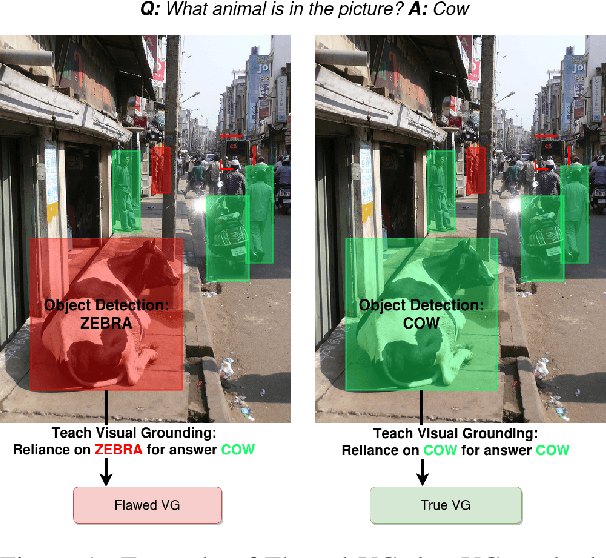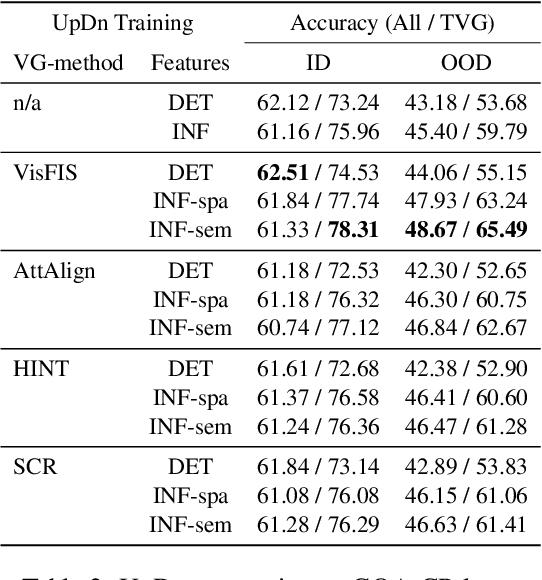Uncovering the Full Potential of Visual Grounding Methods in VQA
Paper and Code
Jan 15, 2024



Visual Grounding (VG) methods in Visual Question Answering (VQA) attempt to improve VQA performance by strengthening a model's reliance on question-relevant visual information. The presence of such relevant information in the visual input is typically assumed in training and testing. This assumption, however, is inherently flawed when dealing with imperfect image representations common in large-scale VQA, where the information carried by visual features frequently deviates from expected ground-truth contents. As a result, training and testing of VG-methods is performed with largely inaccurate data, which obstructs proper assessment of their potential benefits. In this work, we demonstrate that current evaluation schemes for VG-methods are problematic due to the flawed assumption of availability of relevant visual information. Our experiments show that the potential benefits of these methods are severely underestimated as a result.
 Add to Chrome
Add to Chrome Add to Firefox
Add to Firefox Add to Edge
Add to Edge